
Development: What role for Institutions
The ideas of economists and political philosophers, both when they are right and when they are wrong, are more powerful than is commonly understood. Indeed the world is ruled by little else. Practical men, who believe themselves to be quite exempt from any intellectual influence, are usually the slaves of some defunct economist.
Keynes, John Maynard
Introduction
The force of human reductionism that had assaulted on Oromia’s history, civilisation, politics and economy for many centuries in the last three Christian millenniums and particularly of the last two centuries has continued in the new millennium to enfeeble the endeavours of its people towards progress and development.
Oromia is not the poorest of the nations of the world in resources but it is one of the most underdeveloped, characterised by thwarted advancement, declined progress and cataclysm.
In Oromia today immense agricultural potential, mineral wealth and human capital coexist with some of the lowest standards of living in the world. Part of the problem lies in the nature of the economic change the Abyssinian colonialism fostered in Oromia. The Oromo economy has been distorted to serve the Abyss interest and needs.
Oromos are the most brutalised and humiliated in modern history. The genocidal treatments, which Oromos have received from Abyssinians, have been as gruesome as anything experienced by Jews, Native American and native Australians and the Armenians received from the Nazi, Europeans, white Americans, and the Ottoman Turkey respectively. Oromos have also been humiliated in history in ways that range from the level of slavery, segregation and treated as second-class citizens in part of their own country to the present day in spite of being numerically the majority and geographically the largest territory.
In the early 1990s the old Amhara settler colonialism (Nafxanyaa system) was substituted by Tigrean ‘federal colonialism’ (neo- nafxanyaa system) the facet of exploitation seemed to take on new dimensions. In fact, the pattern of colonisation and domination has remained the same since it instated century ago with the Berlin Conference of 1884-1885, which had approved the scramble for Africa among European colonial powers. It was a time when the cruel Abyssinian Empire was given an ordinance of Christianising and ‘civilizing’ the Oromos; though it is a historic derision how a backward and barbaric empire was to ‘civilize’ the society of prime civilisation, high culture and social structure, the ‘natives’, whose development levels and potentials were diverse and by far advanced.
The very idea of Christianising and civilizing was an external imposition often upheld by external protagonists. In the pre 1974 Ethiopia, this took the form of substantial military and economic aid from the US America and Europe. During the Cold War era, the mission of oppression of the Oromos maintained and supported by fresh military and economic aid from the then Soviet Union scheme of spreading its sphere of dominion and its ideology to Africa. In the contemporary ‘new world disorder’, the support has got new momentum in which the old Christian missionaries are replaced by an army of western neo-classical economists who peddle a ‘free market’ ideology, which they hope, will take care of the imprisoned market agents, in this case the Oromos.
According to the new Gospel, the Tigrean colonizers are given the mandate and the necessary financial backing to pursue ‘economic liberalization’ while keeping strict control that Oromia remains the Abyssinian colony. The liberalization agenda has served as a precursor of the making of Tigrean version of crony capitalism or more appropriately advanced feudalism in the age of economic globalisation. It is alien to Adam Smith’s invisible hand, social justice and the free-market ideals of relying on legal contracts, property rights, impartial regulations and transparency. It is no wonder that the political and economic prescriptions that the Ethiopian colonial rules implemented and or pretend to implement are in line with the advice of the International Monetary Fund and the World Bank and The US administration’s The Horn of Africa Initiative all of which have exacerbated the problem of the Oromo nation. It has also betrayed the ideals of free market, social justice, self-determination and human rights.
The sorrowing fact is that shared interest and solidarity between the West and the Abyssinian colonizers are impoverishing the people. Pretentious and ill-conceived measures are being taken in the name of free market and above all development. Currently, there are a number of regime-sponsored ‘associations’ of this or that ‘Region/State’s Development’ anti-terrorism, poverty alleviation, renewal process, revolutionary democracy, etc. Given this, the people’s last resort is to defend their own interests is the exit option or to retreat from the colonizers. What has become more apparent than ever is the need to rely on the Oromo initiatives to solve the problems of the Oromo. The Oromo poor need to defend themselves from the bogus free market invaders and their phoney local allies. This is necessary, since, in the absence of property rights, social justice, and individual and social freedom and democracy, no free market economic gimmickry is able to reserve the tragedy of the oppressed. It is within this context, that we discuss, how the Ethiopian colonial rules, in collaboration once with international socialism and now with the global capitalism has impoverished and underdeveloped one particular community in Africa, the Oromo nation.
Sclerotic to development: The Abyssinian Colonial Occupation and Its Alliances
Economists are inspired to point out the weight of political factors, captured by the term ‘governance’ and its role in economic development. Concerns about political factors in economic development is revitalized because of the dearth of economic development reform and structural adjustment programs to yield definite success and prosperity, particularly, in Africa. The main problem pointed out is ‘poor governance’ (World Bank, 1989; Moore, 1992). There are three different aspects to the notion of governance that can be identified as:
The form of political regime (independent, colonial government, multi-party democracy, authoritarian, etc.),
The process by which authorities exercised in the management of the country’s economic and social resource; and’
The willingness, the competence and the capacity of the government to design, formulate, and implement genuine development policies, and, in general to discharge development and government functions.
As there is no antithesis concerning the conviction that ‘good’ governance is an important and desirable ingredient of development, scholars are cautious not to attach specific regime type and political reforms to good governance. Broadly, however, good governance is legitimated by developmentalist ideology while poor governance is characterized by ‘state elite enrichment ‘ (Jackson and Rosberg, 1984), the ‘rent seeking society’ (Krueger, 1974) or ‘politics of the belly’ (Bayart, 1993;Tolesa, 1995) such as Ethiopia, Nigeria and Zaire). The latter in fact are characterized by sclerotic behaviours and are obstacles to development.
The Oromia’s underdevelopment (negative development) and its associated problems are never going to be understandable to us, much less contain it, as long as we persist to ponder it as a mere as an economic enigma. What is before us momentarily is in essence an enigma of political colonialism whose economic after-effects are severe.
Not only the problem is basically political and colonial in character. It arose largely from Abyssinian imperial conquest and its associated colonial disposition, which is characterized by reliance on sheer force, state terror, genocide, plunder, authoritarianism and violence.
The story goes back to the days of the Abyssinians crossed the Red Sea and seized the territory and resources of the Cushites ( Bibilical Ethiopia, the present Horn of Africa and Oromia) making concerted aggression on the latter’s history and culture in the name of settlement and civilizing the ‘non-believers.’
As it is discussed above and elsewhere, in the first millennium BC the Abyssinian group crossed the Red Sea from South Arabia (source: the debtras’ records and memories of Abyssinian high school history text book) to the present North East Africa to conquer and resettle the land occupied by endogenous Oromo and the other Cushitic people. Recent research recognises that the Semitic culture of the Abyssinian empire’s northern highlands was built on the Cushitic base for which not genuine credit has been given, and the Axum obelisks which were attributed to the (Sabeans Abyssinians) do not have corresponding existence on the Arabian peninsula while they are abundant in the Nile valley stretching from Egypt to ancient Kush in today’s Sudan. This most probably indicates that the earlier phase of Axum civilization was predating the Sabean infiltration/invasion.
Cleansing as a policy was initiated to conquer the Cushite territories. The territory they conquered was divided among numerous Abyss chiefdoms that were as often at war with each other as with Oromo and the entire Cushite. The population of conquered territories were considered as dangerous thus; Abyssinian cleansing, up rooting, forced labour and killings of the vanquished were conducted as the means of crushing resistance, securing the conquered territories and even to expand their occupation further. Though the Abyssinian gained some territories and resettled in the northern highlands of the Oromo and other Cushitic regions among others Afar, Agau, etc., their expansion was checked for a long time in history by wars of resistance and liberation they encountered by the endogenous people. These wars of resistance led to a decisive victory for Oromo, Afar and Somali nations particularly from 12th to the second half of 19th century. As a result of such a defeat Abyssinians started to wage particularly anti-Oromo propaganda battles to alert themselves and attract foreign support against the Oromo. The derogative name ‘Galla’ and the ‘16 century Oromo migration’ were all the Abyssinian fabrications and to serve the war against Oromo. In fact, the Oromo oral history shows that the 16th century was a massive Abyssinian further southward migration and intensive campaign to entirely control Oromia and other territories. For the Oromo this period was characterized by political and military dynamism and at the same time it was a period of victory, massive dislocations, rehabilitation and displaced communities returning home.
According to M. Bulcha (see Oromo Commentary), it was only during the second part of the 19th century that the Abyssinians ultimately succeeded to make significant in roads into the Oromo territory. Tewodros (also known in different names Hailu, Kassa, Dejazmach, Ras, etc., as other Abyssinian shiftas and present Woynes, is on record for his brutish hostility towards the Oromo nation. He was not the first or the last of his kind. They were many before and after him, for concrete evidence even today, this time and this second. All of them have been gangsters of very abnormal characters and Abyssinian detested figures. The Abyssinians remembered Tewodros and his type not only as the romanticized hero figures but also portrayed them as a modernises. Tewodros the lunatic and bandit declared and conducted a war of extermination against the Oromo. In order to help them to bargain for the western support, he and all his type including Yohannes, Menelik, Haile Sellasie, Mengistu and currently Meles declared anti-Islam and anti-Muslim nations. They mobilized all their resources and the entire Abyssinia (Amhara &Tigre) against the Oromo to achieve their goal. Tewodros made every effort to obtain the European military support claiming his fictions of Christian identity and ideology (the then dominant political ideology though he had not any biblical ethics and values, not at all). Tewodros is a symbol and an element of Abyssinian barbarism that was conducted at particular historical stage (1850-1868). Such barbarism has been conducted since the Axumite period (3000 years) but has never achieved its ultimate goal of elimination of the entire endogenous people of the North-East Africa. But it eliminated millions of and it thwarted the civilisations of Cushite people. They have used all the devastating means the: Christian civilizing ideology, European army, settler colonialism, Soviet Socialism, Stalin collectivisation, Mengistu’s villegisation, and America’s structural adjustment, terrorism, etc. They have always tried to change names after names for the same ugly & old expansionism, feudalism and empire (the legendary land of Sheba, Ethiopia, Ethiopia first, socialist Ethiopia, republic, mother land, federal etc.). The very name Ethiopia is Hellenistic Greece. It was the name used in the ancient Greece occupation (before Romans) of North Africa people and southward expansion. This name was colonialism from the beginning and it has been, it is and it will be. It is not African in origin as the people who invented it. This name was adopted and maintained to conquer the entire Cush and then the entire Africa in the shadow of christianisation. It is a sinister name that has no boundary and ethnic identity. It is not only the conquered people of North-East Africa but also all Africanists that must understand, including its sinister philosophy. It was designed and adopted to deconstruct an endogenous African identity.
One implication of the doctrine of Abyssinian ‘civilizing mission’ was that the Oromos needed to be ruled by Abyssinians and could not responsibly be granted civil liberties. Authoritarian as it has always been, the Abyssinian colonial rule in Oromia whether under Menelik II, Haile Selassie, Mengistu and currently under Meles has been characterized by the ‘politics of the belly.’ The underlying ethos remains self-aggrandizement and those elites are alien to growth whereas corruption, brutality, inefficiency and grotesque incompetence have tainted their politics. Time and again, they siphoned off Oromia’s wealth and indulged in conspicuous consumption and stashing millions of dollars in remote secret accounts in Europe, America and Asia. Scholars understand that development is about the future. However, the Abyssinian elites are living for the present. They came for quick self enrichment. The Oromos have no opportunity to invest in their country. They disowned everything.
While the Abyssinian colonial settlers in Oromia do no want and support policies that promote development, they find military and other forms of support abroad to stay in power. In more than one time, this force of underdevelopment has been strongly reinforced by external forces (Holcomb and Ibssa, 1990). Despite generous foreign assistance, this hardly commanded legitimacy to mobilize the colonized masses behind their rule. To the contrary, people who have waged legitimate struggle to reclaim their freedom, cultures and history has fiercely resisted their rule.
As it has been discussed elsewhere, Oromos have their own political power, which was fully operational before they were colonized and occupied by Abyssinians put under the strict control of Ethiopian empire state. Their political system is based on the Gadaa (Gada) system. The Gadaa system has been the foundation of Oromo civilization, culture and worldview (Jalata, 1996). The Gadaa political practices manifested the idea of real representative democracy with checks and balance, the rule of law, social justice, egalitarianism, local and regional autonomy, the peaceful transfer of democratic power, etc. (Jalata, 1966). The Gadaa political system also facilitated property rights, stability, and the expansion of free trade, commerce, improved farm techniques and permanent settlements, gradual diversification of division of labour. The Gada state was non-taxing state. Military was not the focal point, only defensive which is democratic. It was the opposite of expansionist, imperial, genocide or conquering state, e.g. Roman, Sparta, Abyssinian and Serbia, etc.
One of the distinctive virtues of Gadaa state was the weight of civilian power as compared to military power, military aristocracy was practically absent and in normal times, the army executed only an inconspicuous, if not nonexistent, political function. The military aristocracy was not the focal point of society. War had rather a defensive mission.
Nonetheless, particularly since the last decades of the nineteenth century, the Abyssinian colonial rule and its state disallowed the Gadaa political system and expropriated the Oromo basic means of subsistence, such as land cattle while it established an Ethiopian system of rule over Oromia. The Oromo commerce and industrious activities were not only discouraged but also ridiculed and obtained the lowest social status. Productive relations were imposed through the process of commodity production and extraction between those who control or own the means of production, the state, and those who do not. Those who control the means of coercion had the opportunity to reorganize productive relations through dispossession of the colonized Oromos in order to expedite more product extraction.
The process of dispossession is multi-faceted and far-reaching. As the result of it, the Oromos have been denied power and access to education, cultural, economic and political fields while at the extremes, the Abyssinian colonialism has been practiced through violence, mass killings, mutilations, cultural destruction, enslavement and property confiscation.
Apart from the splendid crop farm and animal husbandry, in his 1896-1898 travels in Oromia Bulatovich (2000, pp 60-61) described the Oromian industrial and commercial economy as the most vibrant with conducive endogenous institution as follows:
“Artisans such as blacksmiths and weavers are found among the [Oromo]. Blacksmiths forge knives and spears from iron, which is mined in the country. Weavers weave rough shammas from local cotton. The loom is set up very simple. … There is also the production of earthenware from unbaked clay. Craftsmen who make excellent morocco; harness makers who make the most intricate riding gear’ artisan who make shields; weavers of straw hats (all [Oromo] know how to weave parasols and baskets), aromers who make steel sabers; weavers who weave delicate shammas, etc.
Bulatovich Observed that commerce in Oromo was both barter and monetary based. The monetary unit was the Austrian taller and salt. The former was rather little in quantity and was concentrated in the hands of merchants. He witnessed that Oromos have great love for commerce and exchange economy. According to Bulatovich (2000, pp, 61-63):
“In each little area there is at least one market place, where they gather once a week, and there is hardly an area which is relatively larger and populated which does not have marketplace strewn throughout. Usually the marketplace is a clearing near a big road in the centre of [Oromo] settlements…. Rarely does any [Oromo] man or women skip market day. They come, even with empty arms or with a handful of barely or peas, with a few coffee beans or little bundles of cotton, in order to chat, to hear news, to visit with neighbours and to smoke a pipe in their company. But besides, this petty bargaining, the main commerce of the country is in the hands of the [Oromo], and they retain it despite the rivalry of the Abyssinians. Almost all the merchants are Mohammedan. They export coffee, gold, musk, ivory, and leather; and they import salt, paper materials, and small manufactured articles. They are very enterprising and have commercial relations with the Sudan, Kaffa, and the Negro tribes.”
The Oromos have also valued both the collective and personal independence and freedom very much. Their peaceful and independent way of life was broken and their freedom lost with the coming of the utterly vicious and sever authority and hard school of surrender and obedience of the Abyssinian conquerors. As Bulatovich (2000, p.65) further described:
“The main character of trait of the [Oromo] is love of complete independence and freedom. Having settled on any piece of land, having built him a hut, the [Oromo] does not want to acknowledge the authority of anyone, except his personal will. Their former government system was the embodiment of this basic trait of their character- a great number of small independent states with figurehead kings or with a republican form of government. Side with such independence, the [Oromo] has preserved a great respect for the head of the family, for the elders of the tribe, and for customs, but only insofar as it does not restrain him too much.”
Jalata (1993) sees the Ethiopian colonial domination as the negation of the historical process of structural and technological transformation. This is the case where the Abyssinian colonial class occupies an intermediate status in the global political economy serving its own interest and that of imperialists. The Oromos have been targeted to provide raw materials for local and foreign markets. Inside the empire, wherever they go, the Abyssinian colonial settlers built garrison towns as their political centres for practicing colonial domination through the monopoly of the means of compulsion and wealth extraction.
The Abyssinian colonial system was more cognated to a tributary system whereby the rulers extract tribute and labour from colonized lands. The Abyssinian peasants supported their households, the state and the church from what they produced. After its colonial expansion, Abyssinians maintained their tributary nature and established colonial political economy in Oromia and in the Southern nations. Although the colonial state intensified land expropriation and produce extraction from colonized peoples, capitalist productive relations did not emerge. Gradually with the further integration of the Ethiopian empire into the capitalist world economy, semi-capitalist farms seemed to emerge by extracting their fruits mainly through tenancy, sharecropping and the use of forced-labour systems.
The colonial exploitation has been maintained under Mengistu’s so-called socialist collectivisation/ villegisation campaigns and in the current Meles’ regime under the mask of structural adjustment and ‘free’ market economic system.
It should also mentioned that in addition to authoritarian and coercive rule, the Ethiopian colonialism depended on an Oromo collaborationist agents that were essential to enforce Ethiopian colonialism. This second rate clique is merely an expandable appendage which devotes most of its energy to the scramble for the spoils of slavery, picking up the leftover in economic and political advantages. The main task of this class is to ensure the continuous supply of products and labour for the settlers. Of course this class was not always loyal to the Ethiopian colonial state (Jalata, 1993). Broadly speaking, the state itself is a battlefield for two exclusive claims to rule and political competition among the Ethiopian colonizers, the Amharas and Tigreans. In effect, this makes the Abyssinian colonizer politics effectively a zero-sum game and the very practice of politics become a negation of politics, i.e. politics are practiced with the inert ending of politics.
The Abyssinian rulers, who have inherited power used to believe that their interests were well served by depoliticising, muting and suppressing the Oromos and the Southern peoples’ quest for national-self determination under the guise of maintaining the unity of the Ethiopian empire. So they convinced themselves and tried to convince others that there were no serious socio-political differences and no basis for political opposition. Apoliticism has been elevated to the level of ideology while the political structures become ever more monolithic and authoritarian.
The political structures and political ideologies, which have been used to effect depoliticization and suppression, are all too familiar. The process entailed political repression, which the Oromos endured and suffered for more than a century. The implication of depoliticization is to deny the existence of differences, to disallow their legitimate expression and, therefore, to deny collective negotiation. Whatever the degree of repression, the process did not remove the differences. The ensuing popular frustration and resistance has led to even more repression. That is how political repression has become the most characteristic feature of the colonial political life and domination as its salient political relationship. All this means that political power becomes particularly important; so the struggle for it gets singularly intense.
In Abyssinian Colonial regime and psyche Seize power is supernatural and a magical axiom and power itself does not mean influence on policies but it means license over their colonial subjects. People have been so frightened and constricted by fear and indoctrination. Besides, they have been overwhelmed by deceptive rhetoric, crude, systematic misinformation, and hypocrisy, which made it virtually impossible to see through the situation and to form an intelligent judgement. The Abyssinian rulers including Tewodros, Menelik, Yohannes, Hailessilassie, Mengistu and Meles in resemble wanted an absolute power both on earth and heaven. All mobilised Abyssinian myth to enhance their cults. Loyalty and submission to them was being shrouded in an illusive appeal to be a good citizen. We heard and observed, childhoods dominated by a miasma of poverty, misery, starvation, with no shoes, slavery, slave soldier, premature and painful deaths. The power of the Abyssinian colonial empire has been not only absolute but also arbitrary, extraordinarily statist and hostile. It tightly controls every aspects of its subject’s economy. In the state where politics is driven by the calculus of power, everyone in arena only focused in the accumulation of power. Politics has been reduced to a singular issue of domination. It has never afloat restraint and dispensation. There have been regime changes within the empire but the new has accustomed to reproduce and reinforce the past. None of the the Ethiopian rulers including the present regime fundamentally had any firm interest in transformation , and all of them were only too alert that they could afford to broaden the social base of the state power. Power has been maintained by politicising and manipulating the Abyssinian myth and chauvinistic nationalism and depoliticisation of the occupied. In doing so, they engaged in weakening. They produced not only fanatical divisions within their own echelon but antagonism and exclusivity in society and . the solidarity of the oppressed at any price. It is so clear that such political condition has been profoundly hostile to development. The struggle for power within itself and to sustain the occupation of the oppressed majority has been so engrossing that everything else, including development must be sacrificed
The oppressed are exposed to all kinds of onslaught by state that is hardly subject to any constitutional or institutional fetters. The colonial power barred Oromos from engaging in their own industrial enterprises, export trade, domestic commercial venture, modern and relatively productive farm, private, free media, education and philanthropy etc. Unlike the Hobbes’s state, it is so backward, uncivil sing, further underdeveloping and essentially a military institution that imposes subordination and maintains colonial condition. In this context, it is more colonial and barbaric by the standard of other colonial experiences observed elsewhere in the Americas, Asia and other parts of Africa.
There are two major aspects in which this situation has severely thwarted Oromia’s development. The first enigma lies in the incompatibility between the pursuit of development and the crusade for survival, reproduction of the existing forms of social control and domination. The deleterious after-effect of this animosity is that it leads to misuse of human resources, inefficiency and corruption. Unquestionably, appointments into the positions of power, even when they are positions, which demand specialized knowledge, tend to be made by political criteria, particularly by regarding these appointments as part of survival strategy. Each time such appointment is being made, the friction between political survivals, economic efficiency and development crops up. The ruination to efficiency and development derives not only from the performance criteria and likely incompetence of the persons so assigned but also from the general demoralization of the technically qualified and competent people purveying under them who are often repressed and frustrated by their subjection to the surveillance and regulations of people who are powerful but inapt. Here lies the role of Ethiopian ministers and parastatals: incompetent personnel used to obstruct productive use of resources. Wasted are also competent people. They lose at both ends. In the midst of waste, the Oromos have been denied basic civil and political rights and the right to development. Alien leaders who channel the meagre resources into unproductive uses imposed the related economic problem, the very rights over which the people are fiercely struggling.
Development projects were initiated for wrong reasons; they may, on account of political considerations, be located in places where they are least beneficial both economically and socially. One could site familiar cases where important contracts and licenses have been given to politically significant people. Higher positions are created and new rule and regulations are established just to benefit people whose political support is considered important. Oromia pays for all these disservice. The Ethio-crats are overpaid and creating demoralizing disparities between reward and effort. That is how; the persistence of Ethiopian imperial and colonial domination is imperilling to the integral tenets of development.
Abyssinian academics and international development agencies offer many factors for the apparent failures and crises of development industry in the Abyssinian empire: lack of capital, lack of technology, entreprenuerial skills, corruption, poor planning and management, socialist system, lack of infrustracture, falling commodity prices, cyclical drought, unfavourable international terms of trade, low level of saving and investment. These factors and the long lists of related factor are undeniably crucial factors in development. However, we have to address the misleading assumption that has commonly been taken that there has been development failures and crises. The Oromia experience exhibits the terrible realites that development has never been on the agenda. The business of the politics of occupation has prevented the pursuit of development and the emergence of relevant and effective development paragims and programs.
The burning question is, can the people of Oromia try to trade, farm, imitate and innovate then develop their economy in this state of siege? The question is vital and congruous; but the answer is doubtful, as it is impractical. Development strategies as such are comprehensive programs of social transformation. They call for a great deal of ingenious management, confidence in the leadership and commitment. They require clarity of purpose for a society at large; they need social consensus especially on the legitimacy of the leadership. Yet these are not common features of an institution, which does not represent the society. Besides, development is about change and that change may not work to the survival of the colonial rulers. In this sense it runs against the instincts of the rulers whose preoccupation is to survive and maintain its dominant position. One of the most amazing things about development discourse in Ethiopian empire is how readily it is assumed that the rulers are interested in development particularly when they profess commitment to development and negotiate with international aid organizations for economic assistance. People making this assumption forget the primacy of maintaining colonial power and its conflict with other social and economic goals.
Why the Ethiopian rulers embark on a course of societal transformation just because it is good for the nations under its empire like Oromos if it is bad for their own survival?
The ideology of development has been adopted to grapping resources from external aid agencies. In the name of development people are forced to obedience and conformity. Billions of dollars was looted by tolitarian regime and its cliques. Structural adjustment, privatisation, liberalisation, investment, rural development, fertiliser for farmers and democratisation have been the slogans of Mele’s regime for the last 20 years. There have not been: appropriate political structure and practices, administrative system, institutional framework to conduct development in Abyssinian empire. There have been also failures by international development agencies that have taken the responsibilities of financing development and transferring resources ignoring the specificity and historicity of the Abyssinian empire. This has also exhibited the mounting anarchy of development studies and development practices that has been based on modernising paragim.
The Abysinian rulers and their elites, especially the Amharas regard the ideal characters of themselves as the end of evolution. The application of this evolutionary schema meant advancement is a matter of assimilating to Abysinian culture. Abyysinians have established the negative view of the Cushite people, institutions and their culture. The colonial regime discourages any belief in the integrity and validity of the Oromo society and have offered the notion that Oromos can find validity only in their total transformation, that is, in their total self-alienation. On practical level , the result has been frustrating.They have assaulted on Oromo governance (Gadaa), Oromo culture, Oromo religion (Waqeffannaa) and Oromo names.They have changed Oromo names to Amharic (e.g. Finfinnee changed to Addis Ababa). They assaulted on the use of Oromo language. They evicted Oromos from cities and towns. They instituted the negative image of the Cushite and the superiority of the Abyssinians. How people in such state of mind, behaviour and attitude pursue development? According to Claude Ake “Development requires changes on a revolutionary scale; it is in every sense a heroic enterprise calling for consummate confidence. It is not for people who do not know who they are and where they are coming from , for such people are unlikely to know where they are going,”(Ake, 1996, p. 16).
When we think of development, it is about society at large and the paradox is that it is often the leader who is not in a position to think of the objective interests of the society. For thinking in this way entails profound democratic commitment, which cannot usually be expected of such leaders. By virtue of their position, colonial rulers suffer the disadvantage of confusing what maintains the existing social order, which they dominate, and they are tendentiously suspicious of change; it is all the more so when it comes to fundamental changes.
Finally, we need to remember some of the implications of development with respect to alien colonial rulers. As it has already been mentioned, they have been more interested in taking advantage of the social order inherited from their predecessors rather than in transforming it. To all appearances, they are colonial rulers. Oromos have been oppressed and humiliated for over a century. The political history of the last hundred years of colonial rule of Oromia has vividly indicted that the Oromos lacked freedom; it means that they did not have control over the products of their labour, it means that their natural resources and environment were tarnished by others; and eventually it means that they witnessed chronic poverty, destitution, killing forces, the forces of abuse & alienation, human misery and less and less of humane life.
In these circumstances, it is not surprising that where development is pursued in Oromia, if at all, it is full of ambiguities and contradictions and it is just a mere posture. Even taking these postures on the face value, in so far as we are critical of development strategies in Oromia, our criticism runs in the direction of their sloppy conception and hence their failure to come to grips with sclerotic of imperial domination. If we raise the question of the contradiction between political survival and social transformation, we commence to behold that it is doubtful and equivocal where development is, or it has ever been, on the colonizers’ list for Oromia.
The other aspect of economic consequences of colonial domination has been militarism, which is but the outcome of over-valuing of political power. Associated with it is the intense struggle to obtain and keep it. Therefore, the politics of the empire is sustained by warfare and force than by consent. In this atmosphere, force is mobilized and deployed: the winners are anxious to take absolute power into their hands while the losers forgo not only power but also lose liberty and even life. As politics relies solely on force, the vocabulary and organization advocates coercion. For that matter, the Ethiopian empire is a political formation of armies in action and this is in itself a serious development problem. In an institution in which the political formations are organized as warring armies, differences are too wide and far, the scope for co-operation too limited; there is too much distrust; and life is too raw to nature commerce and industry in subject nations like Oromia. Currently, the militarism of life in general and politics in particular has reached its logical culmination in Ethiopian military rule and its negative consequences have wider regional implications. This too hinders the course of development not only in Oromia but also in entire North East Africa.
Copyright ©The Oromianeconomist 2014 and Oromia Quarterly 1997-2014. All rights are reserved. Disclaimer.

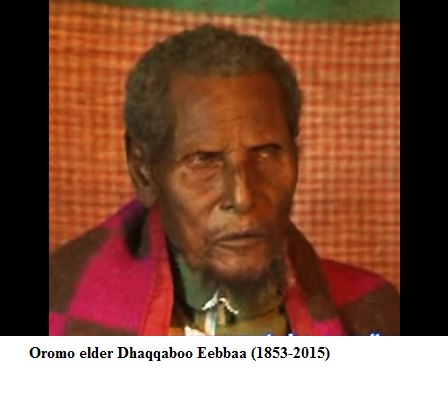
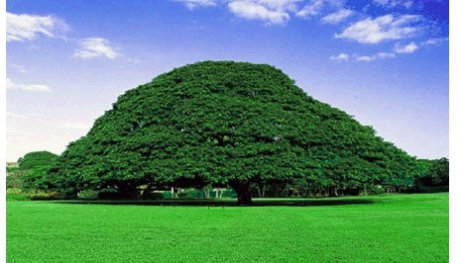



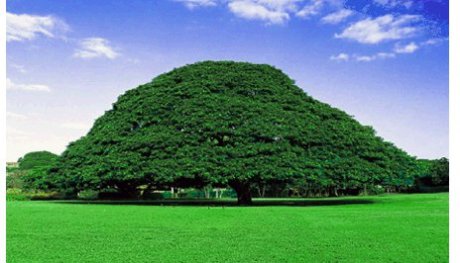


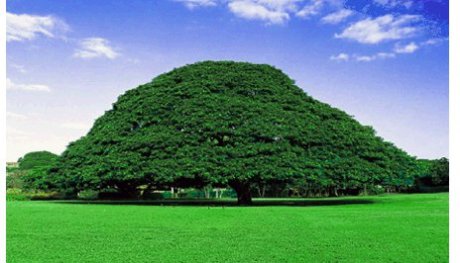

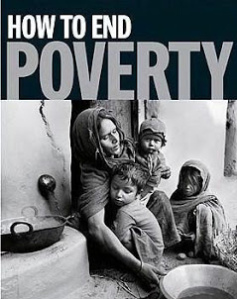
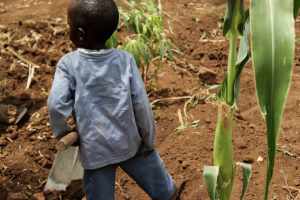






 Working Group Must Address Trade Misinvoicing and Role of U.S. Business and Government in Facilitating Illicit Finance to Be Truly Effective, Warns GFI
Working Group Must Address Trade Misinvoicing and Role of U.S. Business and Government in Facilitating Illicit Finance to Be Truly Effective, Warns GFI